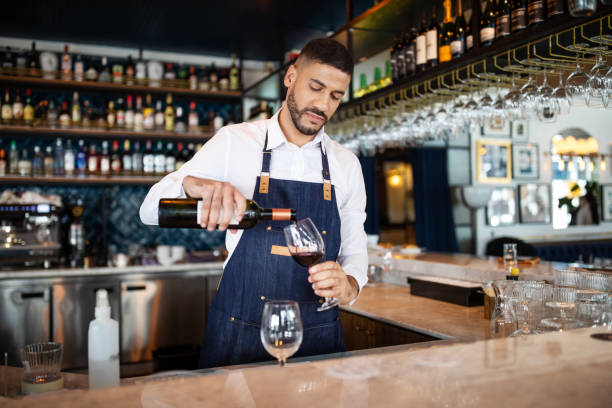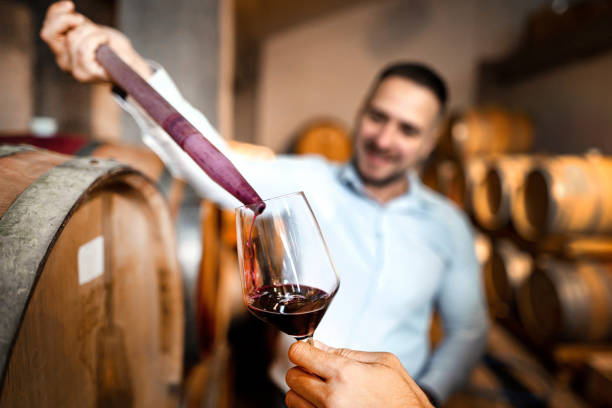Basic cognitive research could help us understand our reaction to wine and the numerous factors that affect the way we experience it. Wine is a complex, culture-laden, multisensory stimulus, and our perception/experience of its properties is influenced by everything from the packaging in which it is presented through the glassware in which it is served and evaluated. An increasing amount of empirical research into wine shows that a range of factors that affect the context, such as everything from the color of the lighting to the background music, can have an enormous and, in some instances, predetermined effect on the taste experience. Sonic seasoning is the pairing of soundscapes or music to certain wines to emphasize or highlight certain characteristics or qualities that the wines possess, like length, sweetness or body is a rapidly expanding area of study. Although this multisensory, immersive research on wine has no doubt numerous application-oriented applications, the research also offers insight into multisensory perception, which can be useful to basic researchers. Additionally, the results of wine research can be of use to marketers who are who are interested in knowing how consumer’s perception of a particular product, whether food or drink, could possibly be altered.
Declaration of Significance
This review paper discusses the way that basic cognitive research can help to understand and, later, alter the way people respond to wine. There is a lot more research into the impact of cognitive or perceptual factors on purchase and the following tasting experience within the realm of wine than other beverage or food items. Hence, understanding what research has already been conducted to influence the perception of the wine itself, and the wine-drinking experience more generally, typically provides an excellent starting point as far as considering how our perception/experience of any other food or beverage product might potentially be modified as well. The article provides a range of instances of how use-informed basic research has already led to insights and possibilities that have been embraced by those who make and/or market wine (e.g., when it comes to the design of cellar door experiences, multisensory tasting events, and even the labels of wine). In the last few years, there has been a significant amount of research conducted into the significance of and expectations created by the color of wine. Brands, bottles, labels, and glassware used to serve wine have also been extensively researched by both marketing and sensory researchers. The past decade or so has also seen an increase in interest in the way people pair music and wine, as well as how the listening experience of music will alter the taste experience with the wine. Wine is a fascinating material to handle because of its complexity and the constant change. Ultimately, however, it can make work with wine more difficult than other drinks and food products.
Introduction
The majority of research into the field of wine has to concentrate on enology viniculture, as well as sensorial evaluation (e.g., Amerine & Roessler, 1976; Goode, 2005, 2016; Peynaud, 1984, 1987; Zoecklein Fugelsang, Gump, & Nury 1995). In this way, it is possible that there has been a lack of relevance for the audience of a journal like Cognitive Research Fundamentals and Implications ( CRPI). However, there has recently been an increase in interest in what could be called “wine psychology”. The growing body of research has brought about a greater awareness of how various perceptual and cognitive factors, which Rozin (2006) refers to as entities or processes (such as sensation, learning, as well as attention and memory), influence the experience of drinking wine for wine professionals and everyday consumers. The perception of wine itself and the wine-tasting experience more generally have been shown to be influenced by everything from the weight of the wine bottle through to the sound made by its closure and the glass from which it is drunk, to the wine’s visual appearance and the multisensory environment/atmosphere in which it happens to be consumed. Researchers from a broad spectrum of disciplines, from the field of marketing to sensory science and cognitive neuroscience to design of packaging and economics, have begun to pay more attention to the way that wine is perceived by consumers regardless of their purchase behavior or their perception when tasting wine.
There is definitely a large amount of psychology involved in the wine world, as well as wine selection (e.g., Batt & Dean 2000, Beverland 2006; Bruwer, Chrysochou, & Lesschaeve 2017. Edwards & Spawton, 1998; Escobar, Kallas, & Gil, 2018; Horska, Bercik, Krasnodebski Matysik-Pejas, Bakayova in 2016, Hughson in 2008, Mitchell & Mitchell, 2009). Wine writers (Goode, 2007; Smith, 2017) and cognitive neuroscientists (Shepherd, 2015 and 2017) have been looking to discover the different brain areas and networks that are involved in the process of wine appreciation. In fact, according to the renowned North American neurologist Gordon Shepherd having a glass of alcohol “engages more of our brain than any other human behaviour” (as mentioned in Hoyle, 2017). So far, the majority of neuroimaging research has been focused on how the brain’s responds to wine as a result of the increasing knowledge about wine (e.g., Banks et and. (2016); Castriota-Scanderbeg and. 2005; Pazart, Comte, Magnin, Millot, & Moulin 2014). However, a distinct branch of research in neuroimaging has examined the impact of brand and pricing information on the responses of the brain to wines in specific regions like the frontal cortex of the brain (Alvino, van der Lubbe, Joosten, & Constantinides currently in publication; Plassmann, O’Doherty, Shiv, & Rangel, 2008; Plassmann & Weber, 2015; Schmidt, Skvortsova, Kullen, Weber, & Plassmann in 2017).
Of all the beverages and food products that are able to be investigated, it’s a wine that has attracted the highest amount of attention in the last 50 years or more. In reality, regardless of what the topic is, whether it’s the effects of color, glasses, packing, branding, design of labels, closure style, price, or perceptual skills, there is an abundance of research available in the realm of wine than any other of the world’s more popular beverages like, for instance, the coffee, tea, beer, or water (e.g., Charters & Pettigrew, 2003, 2005; D’Alessandro & Pecotish, 2013; Goldstein et al., 2008; Kidd, 1999; Lange, Martin, Chabanet, Combris, & Issanchou, 2002; Lecocq, Visser, Lecocq, & Visser, 2006; Lockshin, Jarvis, d’Hauteville, & Perrouty, 2006; Mitchell & Greatorex, 1989; Puyares, Ares, & Carrau, 2010; Siegrist & Cousin, 2009; Spence, 2019c; Spence & Wang, 2019; Tootelain & Ross, 2000; Verdu Jover, Llorens Montes, Fuentes, & M. del M., 2004 and Vollherbst & Urben, 2011, Wansink, Payne, & North, 2007 (see Spence, 2010.c, 2014a, to read reviews).
Researchers have also utilized wine to answer questions pertaining to global versus local data processing (Lewis, Seeley, & Miles, 2009) and verbal shadowing (Melcher and Schooler, 1996). One of the issues which will be addressed in the near future is what extent findings, concepts, and cognitive mechanisms that are related to our interactions with wine can also explain our reactions to other drinks and food products. As I will discuss later, although there are plenty of similarities, there are several important distinctions.
In the end, I’ll be back to the subject of what significance the study of wine psychology might be for the fundamental researcher who is interested in multisensory perception.




